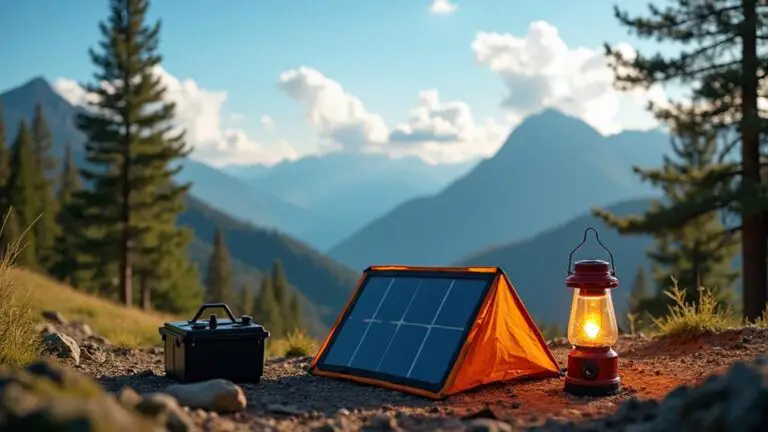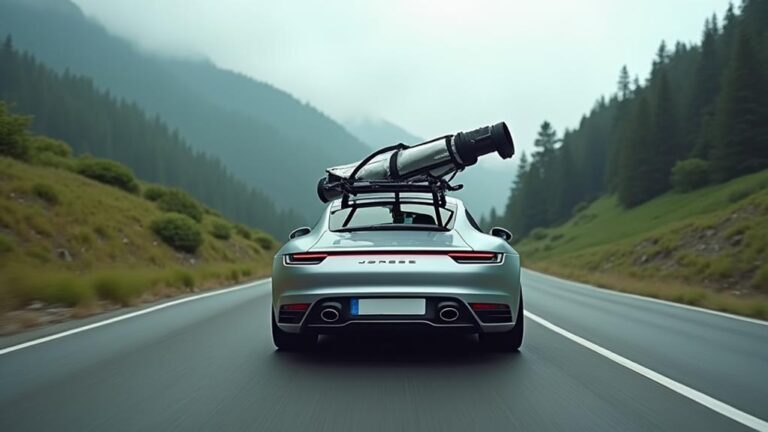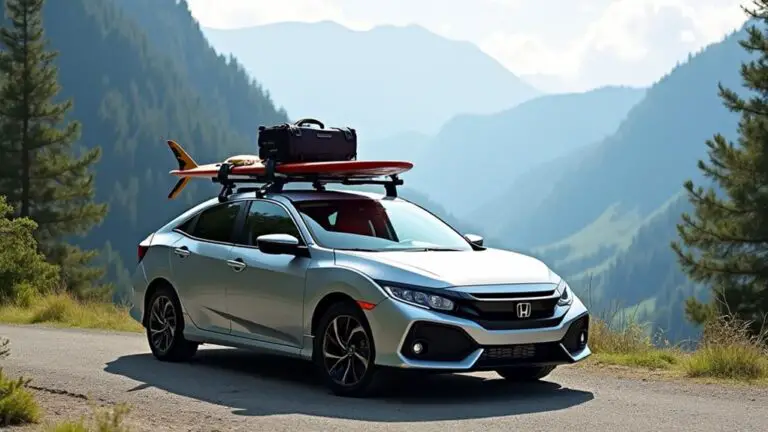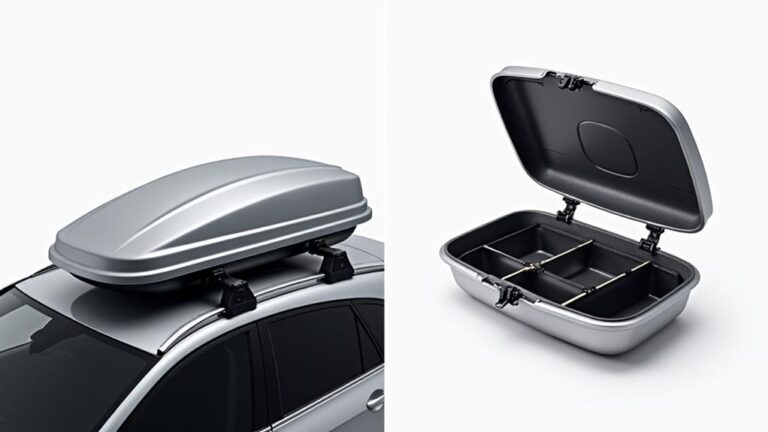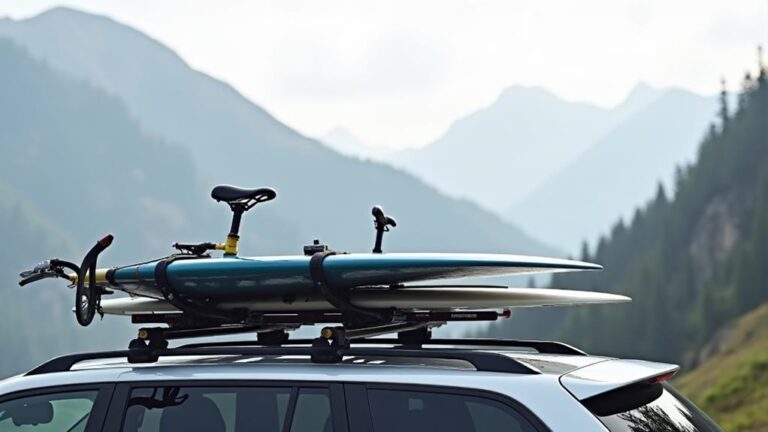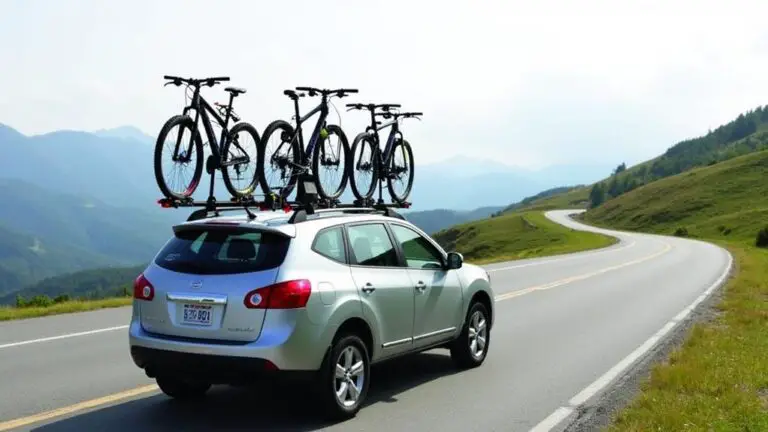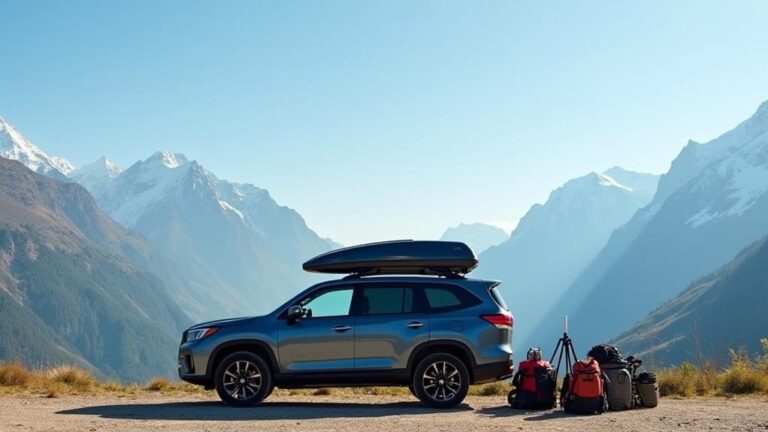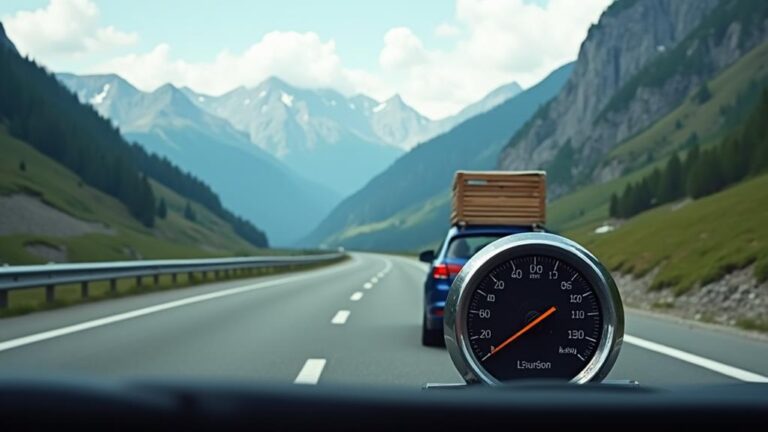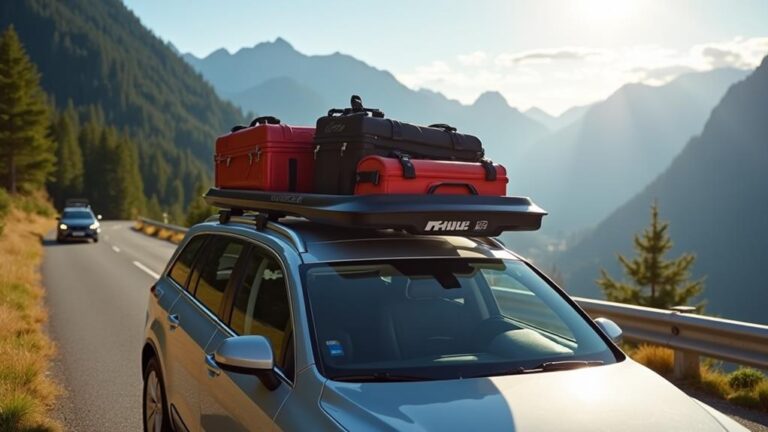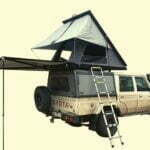When planning a camping trip, it's surprising how many of us take for granted the convenience of electricity – until we need it in the wilderness. You'll be charging your phone, powering a portable stove, or running a medical device, and suddenly the lack of electricity becomes a pressing issue. To guarantee a comfortable and safe camping experience, it's vital to find reliable sources of electricity. But what are your options, and how do you choose the right one for your specific needs? The answer depends on several factors, which we'll explore further.
Key Takeaways
- Use portable power banks or battery-powered camping gear for a quieter, more environmentally friendly option.
- Solar panel systems can be used to generate electricity while camping, considering energy needs and available sunlight.
- Choose the right generator by assessing power requirements, fuel efficiency, surge capacity, and noise level.
- Position solar panels to maximize energy production and conserve energy by turning off devices when not in use.
- Consider power inverters, power strips, and camping lights as essential devices for electric camping.
Portable Power Bank Options
A single portable power bank can be a game-changer for campers who need to keep their devices charged.
When choosing a portable power bank for outdoor charging, consider its capacity, typically measured in milliampere-hours (mAh). A higher capacity means more charges for your devices. Look for a power bank with a high capacity, ideally above 10,000 mAh.
Power monitoring is also essential for efficient outdoor charging.
Opt for a power bank with built-in power monitoring, such as a display screen or LED indicators, to track the remaining power and output voltage. This feature helps you manage your power consumption and avoid over-discharging.
Additionally, consider a power bank with multiple USB ports, allowing you to charge multiple devices simultaneously. Some power banks also come with DC output ports for charging larger devices like laptops.
When shopping for a portable power bank, also check its durability, weight, and size to guarantee it's suitable for outdoor use. A compact and lightweight design makes it easier to carry around.
Solar Panel Camping Systems
When choosing a solar panel camping system, you'll need to select from various solar panel options, including monocrystalline, polycrystalline, and amorphous silicon panels, each with its own efficiency and durability characteristics.
To guarantee you're generating enough power, you must choose the right size of solar panel system based on your energy needs and the amount of sunlight available at your campsite.
Proper panel maintenance is also vital to maximize efficiency and extend the lifespan of your system.
Solar Panel Options
You often rely on portable solar panels to generate electricity while camping, and selecting the right solar panel camping system can substantially impact your off-grid experience. To sort through the various options, crucially, you must debunk some common solar myths. One myth is that solar panels don't work on cloudy days; however, while they may not be as efficient, they still generate some power.
Recent panel innovations have led to significant improvements in efficiency, weight, and durability. When choosing a solar panel, consider the following factors:
| Solar Panel Type | Efficiency | Weight |
|---|---|---|
| Monocrystalline | 15-20% | 2-3 lbs/ft² |
| Polycrystalline | 12-15% | 1.5-2.5 lbs/ft² |
| Thin-Film | 7-10% | 1-2 lbs/ft² |
Monocrystalline solar panels are the most efficient, but also the most expensive. Polycrystalline panels offer a good balance of efficiency and price. Thin-film panels are the lightest and often used in flexible solar panels. By considering these factors, you'll be better equipped to choose the right solar panel for your camping needs.
Choosing the Right Size
Selecting the right size for a solar panel camping system is crucial to meet your off-grid power needs.
To determine the ideal size, you'll need to calculate your camping wattage requirements. Start by listing all the devices you plan to power, including lights, laptops, and phones. Estimate the average power consumption of each device in watts and the number of hours you'll use them per day. Multiply these values to get the total watt-hours (Wh) per day.
Next, consider the efficiency of your system, including the solar panel, charge controller, and battery. A general rule of thumb is to oversize your system by 10-20% to account for losses and variable weather conditions.
Once you have your total watt-hours, divide this number by the average peak sun hours (PSH) per day in your location. This will give you the required solar panel wattage. For example, if you need 1000 Wh per day and your location receives 5 PSH, you'll need a solar panel with a minimum capacity of 200 watts.
Panel Maintenance Tips
A well-designed solar panel camping system can provide reliable power for your off-grid adventures, but it's only as good as the care you give it.
Regular panel cleaning is essential to maintain efficiency. You should clean your panels every 1-2 weeks, or more often in areas with high levels of dust and debris. Use a soft-bristled brush or a microfiber cloth to gently remove dirt and grime.
Avoid using harsh chemicals, abrasive materials, or high-pressure washes, which can damage the panels.
Effective wiring is also critical to guarantee your system operates safely and efficiently.
Check your wiring for signs of wear, damage, or corrosion, and replace any damaged cables or connectors. Make sure your wiring is securely connected to the panels, battery, and charge controller.
Use the correct gauge wire for your system, and keep it organized to prevent tangles and damage.
Regular inspections can also help identify potential issues before they become major problems.
Check your panels for signs of physical damage, such as cracks or broken glass, and replace them if necessary.
Choosing the Right Generator
When it comes to choosing the right generator for your camping needs, several key factors must be considered to guarantee a reliable and efficient source of power.
You'll need to assess your power requirements, taking into account the number and type of appliances you plan to use. This will help you determine the ideal wattage rating for your generator. Look for a generator with a high surge capacity to handle the initial power draw of appliances like refrigerators and air conditioners.
Fuel efficiency is also a vital consideration, as it can profoundly impact your camping costs. Opt for a generator with a high fuel efficiency rating to minimize fuel consumption.
Additionally, consider a generator with an eco-mode or low-idle feature, which can help reduce fuel consumption when the generator isn't under heavy load.
Generator noise is another important factor, especially if you plan to camp in quiet areas. Look for a generator with a low decibel rating, typically around 60 dB or less.
Some generators also feature noise-reducing technologies, such as sound-dampening materials or specialized mufflers.
Battery Powered Camping Gear
Relying on battery-powered camping gear can be a viable alternative to generators, offering a quieter and more environmentally friendly way to power your appliances. When choosing battery-powered gear, consider the battery life and the type of appliances you'll be using. This will help you determine the required battery capacity and guarantee you stay within your camping comfort zone.
| Battery-Powered Gear | Battery Life |
|---|---|
| LED Lanterns | 10-20 hours |
| Portable Radios | 8-12 hours |
| Camping Fridges | 24-48 hours |
To maximize battery life, turn off appliances when not in use, use power-saving modes, and consider using rechargeable batteries. It's also essential to choose appliances with low power consumption to minimize battery drain. When shopping for battery-powered gear, look for products with high energy efficiency ratings and long battery life. This will help you enjoy a comfortable camping experience without the noise and environmental impact of generators. By selecting the right battery-powered gear, you can guarantee a peaceful and enjoyable camping trip while maintaining your camping comfort.
DIY Camping Electricity Solutions
If you want more control over your camping electricity or need a customized solution, consider creating your own DIY camping electricity setup.
This approach allows you to tailor your system to meet specific needs, such as powering camping lights or charging devices.
To start, you'll need a power source, which can be achieved by building your own DIY batteries using rechargeable cells or repurposed materials like old laptop batteries.
When designing your DIY setup, consider the voltage and amperage requirements of your camping gear.
For example, camping lights typically operate at 12V, while smartphones require 5V.
Verify your DIY batteries can provide the necessary voltage and amperage to power your devices.
You may also need to incorporate voltage regulators, fuses, and wiring to create a safe and efficient system.
Keep in mind that creating a DIY camping electricity setup requires technical knowledge and attention to detail.
Research and plan carefully to avoid electrical shock or equipment damage.
With the right components and a well-designed system, you can enjoy reliable and customized electricity while camping.
Inverter and Converter Basics
When setting up your camping electricity system, you'll need to decide on an inverter, a device that converts DC power from your batteries to AC power for your appliances.
As you choose the right inverter for your needs, consider its power rating, efficiency, and waveform output, as these factors will impact your system's overall performance.
Before selecting a converter, which changes AC power from a generator or grid to DC power for your batteries, you'll need to assess your system's specific voltage and current requirements.
What Is an Inverter
To power your campsite efficiently, you'll need to understand the role of an inverter in converting DC power from a battery to AC power for your appliances. Power inverters are essential components of a camping electrical system, allowing you to use AC-powered devices from a DC source.
Inverters work by converting the DC voltage from a battery to an AC voltage that matches the grid voltage, making them compatible with household appliances. There are several inverter types available, each with its own characteristics and applications.
| Inverter Type | Efficiency | Cost |
|---|---|---|
| Modified Sine Wave | Low-Medium | Low-Medium |
| Pure Sine Wave | High | High |
| Square Wave | Low | Low |
When choosing a power inverter, consider the type of appliances you'll be using, as well as the inverter's efficiency and cost. Modified sine wave inverters are suitable for simple appliances like lights and fans, while pure sine wave inverters are better suited for sensitive electronics like laptops and medical equipment. Understanding the different types of inverters will help you select the right one for your camping needs.
Choosing the Right Converter
Choosing the right converter involves understanding the key differences between inverters and converters, as well as the specific needs of your camping setup.
While inverters convert DC power to AC, converters change the AC voltage to a stable and safe output for your devices.
When selecting a converter, you need to deliberate your power requirements, the type of devices you'll be powering, and the converter's features.
To choose the right converter for your camping needs, deliberate the following factors:
- Converter types: Determine whether you need a modified sine wave or pure sine wave converter, which affect the compatibility and safety of your devices.
- Power rating: Verify the converter's power rating matches your total load, taking into account the startup and running watts of your devices.
- Efficiency: Look for converters with high efficiency ratings to minimize energy loss and reduce heat generation.
- Protection features: Deliberate converters with built-in protection features, such as overvoltage, undervoltage, and short-circuit protection, to safeguard your devices and converter.
Camping Power Storage Safety
In conjunction with your camping power system, proper storage and handling of batteries and other energy storage devices are essential for maintaining safety.
When it comes to camping power storage, you must be aware of the potential hazards associated with batteries, such as electrical shock, explosion, and fire.
To minimize these risks, verify that your batteries are stored in a well-ventilated area, away from open flames or sparks. It's also pivotal to keep them out of reach of children and pets.
When handling batteries, always wear protective gear, including gloves and safety glasses.
Avoid short-circuiting batteries by keeping them away from metal objects, and never mix different battery types or charge levels.
Regularly inspect your batteries for signs of damage or wear, and replace them if necessary.
By taking these electrical precautions, you can dramatically reduce the risk of accidents and guarantee a safe camping experience.
Additionally, keep a fire extinguisher nearby and know how to use it in case of emergencies.
Off-Grid Camping Electricity Tips
Having taken steps to guarantee safe battery storage and handling, you're now ready to explore practical tips for generating and using off-grid camping electricity.
To make the most of your camping experience, consider the following strategies for harnessing electricity in the wilderness:
1. Assess Your Camping Comforts: Determine which off-grid essentials you need to power, such as lights, refrigeration, and communication devices.
This will help you calculate your energy requirements and choose the right power generation and storage solutions.
2. Choose the Right Solar Panel Angle: Position your solar panels to maximize energy production.
Typically, this means adjusting the angle to match the latitude of your location and the time of day.
3. Conserve Energy: Be mindful of your energy usage and turn off devices when not in use to prolong battery life.
Use energy-efficient appliances and consider upgrading to LED lights.
4. Monitor Your Power Generation: Keep track of the amount of energy your solar panels or generators produce, and adjust your usage accordingly.
This will help you stay within your energy budget and avoid running out of power.
Electric Camping Device Essentials
These devices include power inverters, which convert DC power from your battery to AC power for your appliances, and power strips, which allow you to plug in multiple devices at once. Camping lights, such as LED lights, can also be an essential component of your electric camping setup.
| Device | Function | Recommended Use |
|---|---|---|
| Power Inverter | Converts DC to AC power | For powering AC appliances like laptops and lights |
| Power Strip | Provides multiple AC outlets | For charging multiple devices at once |
| Camping Lights | Provides LED lighting | For illuminating your campsite and reducing power consumption |
When selecting electric camping devices, consider factors like power rating, efficiency, and durability. Choose devices that are designed for outdoor use and can withstand the elements. By selecting the right electric camping devices, you can guarantee a safe and efficient off-grid power setup.
Frequently Asked Questions
How to Prevent Overcharging My Portable Power Bank?
To prevent overcharging your portable power bank, you'll want to implement smart power management by setting charging schedules and using a charger with automatic cut-off or a built-in timer to regulate the flow of power.
Can I Use a Car Battery for Camping?
You can use a car battery, but consider a Deep Cycle battery designed for frequent discharge and recharge. Proper Battery Maintenance is vital to extend its lifespan, so guarantee regular checks and balanced charging.
What Is the Lifespan of a Portable Generator?
You'll find that a portable generator's lifespan typically ranges from 1,000 to 3,000 hours, depending on fuel capacity and maintenance routine. Regular oil changes, filter cleaning, and spark plug replacements will help extend its lifespan.
Can I Charge My Power Bank in the Rain?
You're probably aware 75% of electrical accidents occur due to improper use in wet conditions. When charging your power bank in the rain, prioritize Rain safety by using a Waterproof design and sealed ports.
Are Camping Solar Panels Prone to Theft?
You'll want to secure your solar panels with theft deterrents like cables and padlocks, and invest in a portable storage case to protect them when not in use, bolstering your campsite security.
Conclusion
You're now equipped with the knowledge to electrify your camping experience like a pro. Having a reliable power source is as essential as a compass in the wilderness – without it, you're lost. By choosing the right portable power bank, solar panel system, or generator, you'll be able to charge your devices, power your gear, and stay connected. Always prioritize power storage safety to guarantee a seamless and enjoyable off-grid camping experience.
